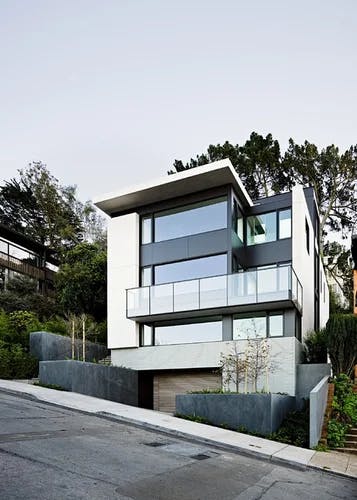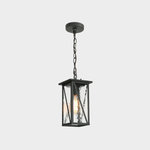
How much does it cost to build a house?
National Average$347,000 - $915,386
The typical cost to build a house is $427,892, according to the National Association of Homebuilders (NAHB). The typical cost range to build a house is $347,000 - $915,386, but a high-end luxury home can cost around $2.4 million. These numbers are based on a 2,776-square-foot home, which is the median size of a new single-family home according to the NAHB. The typical cost to build a house is $154 per square foot.
Is it cheaper to build a house or buy a house?
Is it expensive to build your own house? Well, yes, it’s generally more expensive to build your own new single-family home than it is to buy an existing home. The average price to buy real estate that is a previously owned home was $247,200 in 2017, compared with $427,892 to build a new one from scratch.
That being said, some homes that you can purchase new — like a mobile home or a prefabricated tiny home — cost far less than building a new single-family home of the median size (2,776square feet). And with these less expensive options, you still get a home that no one has lived in before you.
When deciding whether to build a new house or buy a preowned one, you’ll want to consider not only the overall cost but the advantages of building your own new single-family home. One big advantage is that you get to choose the home design you want and the finishes you want — within the limits of your budget, of course. Speaking of budgets, let’s take a look at the factors that will affect how much it costs to build your new house.

Find a general contractor to build your home
What are the factors that affect the cost to build a house?
All stick-built houses — meaning houses that are framed with lumber (or steel) and built from the ground up, rather than purchased preassembled — have some basic components in common. For example, you will need land to place your new construction on and you will also need home building plans that your builder will follow. Your new house will need to be framed, and it will need to have plumbing lines, insulation in the walls to keep you warm and electrical power to help you weather winter and summer. These items are examples of necessary expenses when building a home — you really can’t avoid them and will typically need to pay the price of materials and labor in your area, with few opportunities to save.
The part of constructing a home where you do have some wiggle room on building costs is the interior finishes. These are things like cabinet style and material, countertop material, appliances, flooring and more. The costs for these elements can vary quite widely. That means you may be able to adjust your dream home regarding these components to stay within your budget.
The average cost of $427,892 for having a home built includes three major components:
$91,996 for a finished lot
$237,760 total construction cost
$98,135 in other costs the builder incurs
These numbers are based on data from the Construction Cost survey by the NAHB for 2017. Now let’s take a look at the average costs for each of these essential components
How much does the lot cost?
Every house needs land to sit on. The average cost of a lot in the U.S. in 2017 was $91,996, including financing costs. This is for an average lot size of 11,186 square feet, or about one-fourth of an acre (an acre is 43,560 square feet). This size is smaller than the average lot size reported by builders in recent years, likely due to a shortage of available lots overall in the U.S.
A number of factors will affect the price of your lot, including size as well as its location. The proximity and quality of schools near the property, as well as shopping and services, will also affect the price of the land.

How much does actually building the house cost?
Constructing a house involves a series of steps that a variety of tradespeople who specialize in each task — like plumbing, framing or electrical wiring — will perform. Now let’s look at the costs of each of the components.
Site Prep
Getting a lot ready for construction of a new home involves a number of steps to make sure your home will have the basics you need, like functioning water and sewer lines. Your contractor will need to procure building permits, and there will be water and sewer inspections that also carry fees. You’ll likely pay for an architect to create drawings of your home and an engineer to confirm that the design is structurally sound. You may pay impact fees to the local community to offset the cost of providing services to the newly built home.
Throw in some miscellaneous other fees for a total average cost of about $16,000 in site work before construction begins. This total includes building permit fees, water and sewer inspection fees, architect and engineering fees, impact fees and miscellaneous other fees.
Find an architect or a building designer to create plans for your new home
Foundation
Once the blueprints are finalized and all the permits are acquired, construction can begin. The first major step is preparing the site for the foundation. This is a messy process during which you’ll see backhoes, bulldozers and dump trucks on your property. Workers will clear vegetation and level the soil where your home will be built. They’ll also dig trenches and holes for the footings.
Footings are typically a combination of poured cement and steel rebars, or rods, and their job is to keep the foundation from sinking. Workers will place the footings and then pour the concrete foundation. It could be a flat slab, or below ground if your home will have a basement.
The average total cost for foundation work is around $25,600. This includes excavation, the foundation, concrete, any retaining walls and backfill (putting soil back in a trench as needed), and other miscellaneous costs.
Framing
Framing is the part of home construction during which you’ll start to see the house take shape. This is when the walls, roof and floor of your new home go up. Workers will put up vertical and horizontal timber (or sometimes steel) pieces that serve as studs, floor joists and roof trusses. The frame of the house is also called the skeleton or the shell.
Once the basic shell of the home is framed — one story on top of the other, if there are multiple stories — the framers will wrap it in sheathing, which is typically plywood or a similar material called oriented strand board (OSB).
In total, framing — including the roof — costs an average of about $41,000 for both labor and materials. This includes framing, trusses, sheathing, metal or steel and other miscellaneous costs.
Of course, the cost for framing will vary depending on the size of your home, with costs rising for larger homes and shrinking for smaller ones. Framing a home with multiple stories is more expensive than framing a single-story home.
Exterior Finishes: Roof, Siding, Windows and Doors
Exterior finishes are what you see from the street — and as such, they’re the elements of the home that help to give it curb appeal. These items include the home’s siding, which may be anything from brick to cement board, as well as its roof, which could be composed of a variety of materials, from clay tiles to shingles to slate. Windows and doors also give a home its exterior look.
In total, the average cost for this category of materials is around $33,000, which includes:
Exterior wall finishes
Roofing
Windows and doors, including the garage door
Other elements
Find a painter near you to paint the exterior of your home
Major Home Systems: Plumbing, Electrical and HVAC
A home is not a very comfortable home without running water, electricity and HVAC (heating, ventilation and air conditioning) — major home systems that cost an average of about $33,000 to rough in. This includes:
Plumbing
Electrical
HVAC
Additional costs
The cost averages for these items encompass labor and materials for hidden plumbing and electrical lines, as well as ducts for heating and cooling systems, but do not include fixtures like bathtub faucets or dining room chandeliers.
Interior Finishes: Drywall, Paint, Cabinets and More
Interior finishes are everything that goes into the portion of the house inside the framing, from the insulation in the walls to the drywall that actually composes the walls, to items like lighting fixtures, flooring, interior doors and kitchen cabinets. This is the part of the home for which you have the greatest flexibility in terms of cost, as there is a huge range of prices for different materials and finishes.
In total, the average cost for these interior finishes is around $68,000. This includes:
Insulation
Drywall
Interior trim, doors and mirrors
Painting
Lighting
Cabinets and countertops
Appliances
Flooring
Plumbing fixtures
Fireplace
Other
Kitchens and bathrooms are the most expensive rooms to finish, since they involve cabinets, countertops, backsplashes, plumbing and sinks (kitchens and bathrooms), tubs and showers (bathrooms) and appliances (kitchens). There is a huge range in costs for materials for all of these options, so speak with your builder about the cost of the various options you would like to consider.
Final Touches: Landscaping, Driveways and Porches
Once the house structure itself is finished inside and out, there are a number of details that make it feel like a home. Landscaping; outdoor structures like decks, patios or porches; and a driveway are among these finishing touches.
In total, the average cost for these final items is about $16,500. This includes the following:
Landscaping
Decks, porches or patios
Driveway
Cleanup
Other items

What are the other costs of building a house?
So far we’ve described the costs for purchasing and developing a lot ($91,996) and constructing a house on it ($237,760) — but those aren’t the only costs involved in building a house. When a builder creates a new house, he or she also has financing costs for the property he or she is building on, as well as marketing costs, sales commissions, overhead and general expenses. After all, a builder is running a business and needs to pay all the people involved in building the house. He or she also needs to make a profit.
What does this mean for you, the new home buyer? Well, unless you’re acting as your own builder and hiring and managing all the subcontractors who will work on your home — which we definitely don’t recommend unless you actually are a general contractor — these costs will be rolled up into your home cost.
On average, these builder-related costs add up to about $98,000 and include:
Financing costs
Overhead and general expenses
Marketing costs
Sales commission
Profit for the builder
You may notice that the $45,902 in profit for the builder comes out to about 10.7 percent of the total sale price — which means that nearly 90 percent of the costs in the price the buyer pays for a newly built home go toward paying for materials and workers, as well as for marketing and sales, needed to build the home and find a buyer.
What is the cheapest way to build a house?
If you are going to build a new home, purchasing one that’s part of a new development with ready-made plans can help you save on cost compared with building a fully custom home. With this option you’ll likely get to make some selections, but not as many as you would with a fully custom home. For many people, not having to make a decision about every single finish can be a good way to reduce the stress and fatigue that can come with building a new home. That said, a fully custom home is the best way to get the home exactly how you want it — you’ll just need to pay for that privilege.
Another way to save is to purchase a prefabricated home, a modular home or a mobile home. Not having to construct the home from the ground up can save you money.
Of course, the cheapest way to build a house is to do as much of the work as possible yourself, but for many people that is just not realistic. What you may save on labor costs, you’ll likely spend in time learning how to do the work — and possibly making costly mistakes that need to be repaired. For items like the framing, foundation and roofing that are critical for the structural integrity of your building, it’s probably not a good idea to try to install these yourself.
Contact a custom home builder to get started on your project





